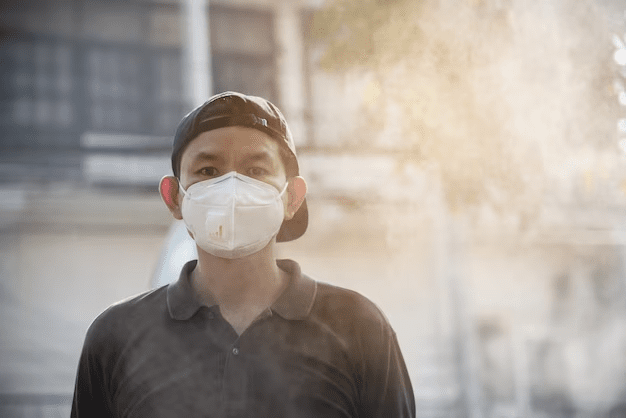Urban Pollution: Challenges and Sustainable Solutions

Humanity has profited from urbanization and fast industrialization, which have improved and eased human existence. But industrialization and urbanization also bring risks to humankind leading to urban pollution. The primary sources of pollution in densely populated areas include automobiles, industrial facilities, combustion and heating plants, etc.
The term “urban pollution” describes the introduction or presence of toxic or dangerous materials in cities and urban regions. Although there are natural causes of urban pollution, emissions resulting from human activity are the most harmful. The pollution in urban areas because of the local concentration of people and human activity in cities, and anthropogenic sources of pollution including factories, industries, transportation, and so on contributes to an increase in the overall urban pollution level of the city .(1). Environmental issues like waste management, recycling, and the production of light and noise, as well as worldwide environmental issues like global warming, impact urban pollution in cities.
There are different types of urban pollution which in sum leads to an increase in the overall urban pollution of the cities. Vehicle emissions, industrial activity, and combustion processes all contribute to air pollution. This includes pollutants such as PM, NOx, SO2, VOCs, and ozone.
Water pollution is caused by industrial discharges, sewage treatment that is not done properly, agricultural runoff, and littering. This contaminates water with chemicals and heavy metals, as well as nutrients, which can harm aquatic life and affect human health. Noise pollution is caused by urban activities such as traffic, construction, industry, and social events. Long-term exposure to high noise levels can cause stress, hearing impairment, and other health problems (2).
Light pollution is caused by too much or too little artificial light from streetlights, buildings, and advertisements that interfere with natural light cycles. This affects wildlife, disrupts ecosystems, and can hurt human health. The urban heat island effect is caused by buildings and infrastructure that cause higher temperatures, which can change local climate patterns and stress ecosystems. Soil pollution is caused by the disposal of hazardous materials, which can affect soil quality, fertility, and agricultural production.
Causes of Urban Pollution-
Because urban ecosystems are complex and the several elements that contribute to pollution are linked, addressing urban pollution presents several issues.
- Population Density: Because urban areas are highly inhabited, there are more sources of pollution from homes, businesses, and transportation, which makes mitigation more difficult.
- Vehicle Emissions: Because of the sheer number of cars, buses, train and other modes of transport in cities and the sluggish adoption of greener technology, controlling vehicular emissions is a challenging task.
- Industrial Activities: Urban industries are a major source of pollution. It might be difficult to strike a balance between pollution control measures and economic growth.
- Infrastructure Development: As a result of massive building projects brought on by rapid urbanization, the quality of the air and water is often impacted by dust, noise, and pollution.
- Waste management: The massive volumes of trash generated in urban areas may pollute the air, water, and land if they are not properly disposed of. It might be difficult to maintain effective waste management procedures.
- Fewer Green Areas: As a result of urbanization, there are fewer green areas, which are essential for reducing pollution. The scarcity of arable land in cities makes it difficult to create and maintain these areas.
- Inadequate Laws and Regulations: Occasionally, there are legal loopholes or lax enforcement of the current legislation, which permits businesses and people to contribute to pollution without facing consequences.
- Impact of Climate Change: Urban areas are especially susceptible to the effects of climate change, which can worsen pollution problems by bringing severe weather and changing environmental conditions.
Air Pollution due to urbanization-
The challenges due to urban pollution and emissions results in air pollution due to automobile emissions, manufacturing processes, and buildings, which causes respiratory ailments and deteriorates the environment. When pollutants are released into the air from various sources such as industrial processes, vehicle emissions, and natural sources, they can contribute to the degradation of air quality. Common air pollutants include particulate matter, nitrogen oxides, sulphur dioxide, carbon monoxide, and volatile organic compounds (3).
Air pollution can lead to a variety of environmental and health issues, including respiratory and cardiovascular problems. Air pollution can cause or exacerbate respiratory conditions such as asthma, bronchitis, and other respiratory infections. Even long-term exposure to air pollution is associated with an increased risk of cardiovascular diseases.
Air pollution can harm ecosystems, soil, water bodies, and vegetation. It can lead to acid rain, smog formation, and damage to crops. Certain air pollutants, such as greenhouse gases (e.g., carbon dioxide), contribute to climate change by trapping heat in the Earth’s atmosphere. An increase in particulate matter and other pollutants due to air pollution can reduce visibility, posing hazards for transportation and increasing the risk of accidents.
Causes of urban air pollution
Urban air pollution is worse in areas with denser inhabitants. Air pollution is greatly increased by urbanization due to several interrelated factors, including:
- Transportation: As cities get denser, there is an increase in the number of cars on the road, which means that cars, trucks, and other vehicles emit more emissions. Particularly in cities, traffic congestion leads to idle cars, which raises exhaust emissions.
- Industrial Activities: Industries that generate pollutants like sulphur dioxide, nitrogen oxides, particulate matter, and volatile organic compounds are frequently located in urban areas. In densely populated areas, industrial emissions can seriously deteriorate the quality of the air.
- Energy Consumption: For industrial, commercial, and residential uses, urban areas require more energy. Burning fossil fuels to produce electricity and heat results in the emission of pollutants into the atmosphere.
- Industrial Development: As cities grow, a lot of work needs to be done on the infrastructure and industrial development which generates pollutants, dust, and particulate matter from large machinery.
How to combat Urban Pollution on an individual level?
Combating urban pollution on an individual level involves a combination of policy measures, public awareness, and individual actions (4). Here are some strategies that can be adopted on a personal level that will contribute to improving urban air quality and promoting individual health:
- Promoting Sustainable transportation:
- Invest in and improve public transportation to reduce the number of private vehicles on the road.
- Encourage walking, cycling, and the use of electric vehicles.
- Implement and enforce vehicle emission standards to reduce pollutants from automobiles.
- Car-pooling is an eco-friendly, cost-effective, and efficient way to commute, benefiting both individuals and the environment. By sharing a ride, fewer vehicles are on the road, which can ease traffic congestion during peak hours and reduce emissions, which contributes to better air quality and a smaller carbon footprint.
- Plant more trees:
- Plant more trees along streets and in public spaces, as they can help absorb pollutants and provide shade. Trees filter the air by absorbing pollutants such as sulphur dioxide, ozone, and carbon monoxide, thus improving air quality.
- Use of indoor air purifying plants like snake plant, spider plant, aloe vera, peace lily etc. These plants can help remove toxins and improve indoor air quality.
- Implement Strict Industrial Emission Standards:
- Enforce and regularly update emission standards for industries to limit the release of pollutants.
- Encourage industries to adopt cleaner production technologies and practices.
- Proper waste Management:
- Promote proper waste disposal and recycling to reduce the burning of waste, which releases harmful pollutants.
- Encourage the use of environmentally friendly packaging and materials.
- Keep the wet and the dry house waste separate. This small step can be very helpful when it comes to organized waste disposal.
- Opt for eco-friendly, biodegradable, and non-toxic products to reduce the release of harmful chemicals into the environment.
- Protect your lungs:
- Establish and maintain a comprehensive air quality monitoring system to track pollution levels.
- Use a mask, scarf, stole etc. whenever required to protect yourself from the harmful pollutants in the air.
- Techniques like diaphragmatic breathing, pursed lip breathing, and pranayama from yoga can help improve lung capacity and promote better oxygenation.
- Consuming foods rich in antioxidants, such as fruits, vegetables, and green tea, can support lung health by reducing inflammation and fighting oxidative stress.
- Opt for lung detoxifying products available in the market with potent lung detoxifying ingredients like N-acetyl cysteine, vitamin C, glutathione etc.
- Education and Awareness:
- Educating the public about the health risks associated with air pollution and ways to reduce exposure.
- Promoting lifestyle changes, such as choosing eco-friendly products and reducing energy consumption.
- Community Involvement:
- Engaging local communities in pollution reduction efforts and decision-making processes.
- Supporting and participating in community-led initiatives aimed at improving air quality.Urban pollution includes a variety of contaminants that harm the land, water, air, and general standard of living in cities and towns. Urban environments are densely populated with industry, transportation, and infrastructure, all of which contribute to the production and build-up of pollutants and a host of environmental and health problems.
Addressing urban pollution requires a multi-faceted approach involving collaboration between government bodies, businesses, communities, and individuals. By adopting and promoting sustainable practices, cities can create healthier environments and reduce the impact of pollution on public health.





